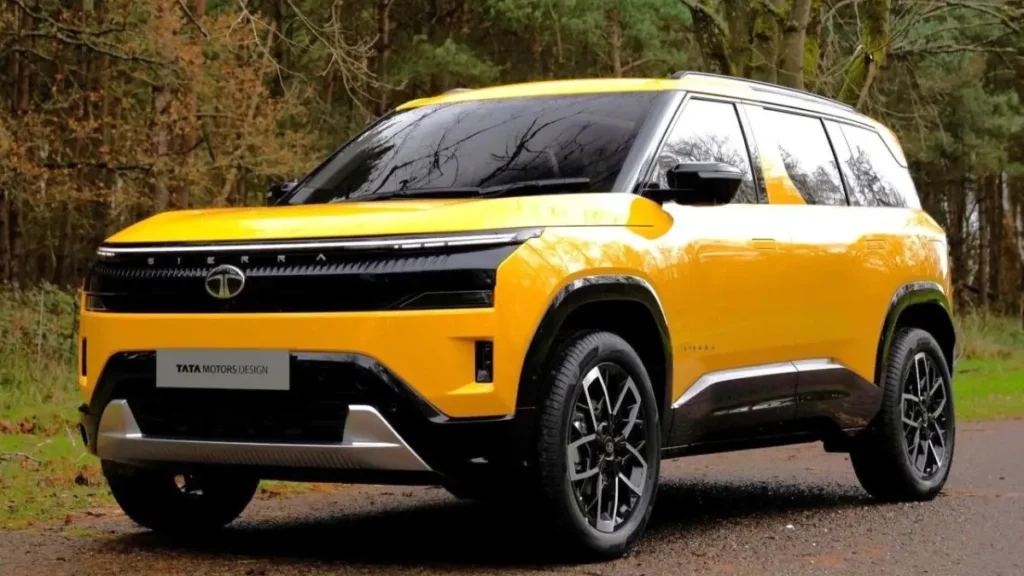
Introduction
The Tata Sierra is back — and it’s not just a nameplate revival. Tata Motors’ design team, led by Martin Uhlarik, has reinterpreted one of India’s most iconic SUVs for the modern era.
The new Sierra ICE (Internal Combustion Engine) version stays true to the SUV’s timeless DNA — its clean lines, upright stance, and signature glasshouse — while bringing in a sharper, more technical design language that reflects Tata’s future direction.
Design Philosophy: Reimagining an Icon
When Tata Motors decided to bring back the Sierra, it wasn’t just a design exercise — it was a matter of heritage and emotion. Uhlarik explains that while he didn’t grow up with the original Sierra, he instantly recognized its symbolic importance to Tata Motors.
“It stood out as a design that captured Tata’s principles better than anything,” he said.
“Adventure, aspiration, and emotion — that’s what the Sierra was, and still is.”
The goal was to make the Sierra modern, high-tech, and aspirational — not a retro remake. For Uhlarik’s team, the challenge lay in balancing nostalgia with innovation — creating something new without losing what made the original Sierra unforgettable.
Exterior Design: Minimalism with Muscle
At first glance, the Sierra ICE looks unmistakably Sierra. The proportions are upright, the body is clean, and the silhouette carries that iconic wraparound glass from the original.
Uhlarik calls it an “exercise in reduction.” Every unnecessary crease or contour was eliminated to achieve visual purity. The result is a minimalistic, boxy SUV that stands out in a market flooded with over-styled crossovers.
Key Exterior Highlights
- Seamless body panels created as single-piece surfaces — a feat that required sleepless nights from engineers and suppliers.
- Signature B-pillar design that immediately identifies the Sierra, even without badges.
- Clamshell tailgate — redesigned for cleaner surfacing and wider boot access.
- 19-inch alloy wheels — giving the SUV a confident, planted stance.
- Horizontal DRL signature across the front, echoing Tata’s new SUV design language.
Even Ratan Tata himself played a role. When early design models showed changes to the window line, Mr. Tata personally intervened — reminding the team that the Sierra’s signature side graphic was sacred.
Balancing Function and Emotion
From an engineering standpoint, the Sierra’s signature glasshouse and upright pillars posed challenges. Reducing blind spots, maintaining safety standards, and integrating modern structural elements meant finding a delicate balance.
But as Uhlarik notes, good design is the sum of invisible decisions.
“Sometimes you fight for millimeters. People might not see it, but they’ll feel it.”
The Sierra’s stance communicates power and capability — without shouting. Its minimal lines and wide shoulders project confidence and safety while remaining true to Tata’s “less is more” philosophy.
Interior & Technology: A Modern Take
While the full interior reveal is scheduled closer to launch, Uhlarik gave a glimpse of what to expect — a “coast-to-coast” triple-screen dashboard layout that merges technology with simplicity.
The system includes:
- Two equal-sized displays for infotainment and co-driver functions.
- A slightly smaller driver display for better steering visibility.
- A redesigned user interface combining physical and digital controls for tactile quality.
Tata’s design team has worked on blending analog and digital — ensuring that while touchscreens dominate, essential functions retain premium-feeling physical switches.
“User interface is not just the screen,” Uhlarik emphasizes. “It’s everything you touch — the steering, gear selector, and switches. Every interaction must feel high quality.”
Color and Character
The yellow launch color became an instant head-turner — internally nicknamed “Pikachu” by the design team. But the inspiration was deeper than pop culture.
Uhlarik explains that it draws from the 1990s Sony Sports Walkman, known for its rugged, adventure-ready aesthetic.
“It communicates outdoor spirit — adventure, energy, and nostalgia. The Sierra had to feel the same way.”
A darker ‘Dark Edition’ with 20-inch wheels is also likely in development, continuing Tata’s popular all-black design theme.
Design Continuity Across Tata’s Lineup
Interestingly, the Sierra ICE and the upcoming Tata Curvv share similar dimensions (around 4.3 meters) but serve different audiences. While the Curvv leans toward a dynamic coupe-SUV style, the Sierra remains upright, timeless, and functional.
Uhlarik believes there’s space for both.
“The market is maturing. These cars don’t compete — they complement each other.”
He also confirmed that future Tata interiors will share certain modular components — like switches and displays — but each car will have its own character and purpose.
Conclusion: Sierra’s Revival Is More Than Nostalgia
The Tata Sierra ICE represents more than just the return of a beloved name. It’s a statement of intent from Tata Motors — blending design purity, engineering precision, and emotional storytelling into one SUV.
With design leadership from Martin Uhlarik and his global team, the Sierra embodies Tata’s confidence as a global automaker — rooted in Indian legacy, driven by modern vision.
It’s clean, capable, and unmistakably Tata.
Pravin is a tech enthusiast and Salesforce developer with deep expertise in AI, mobile gadgets, coding, and automotive technology. At CarzCorner, he shares practical insights and research-driven content on the latest tech and innovations shaping our world.
